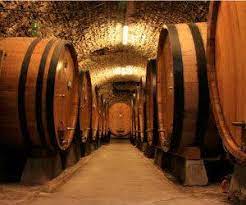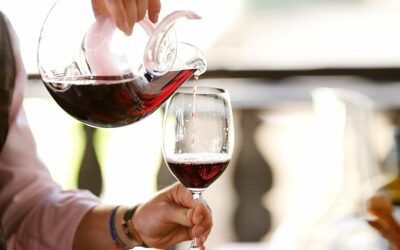From one house, about 23 acres of vines, two wines, and little technology, Velenosi Wines has grown to include two family-owned wineries, more than 350 acres of vineyards in Le Marche, and more than 208,000 cases of wine produced annually today. In 2017, Velenosi acquired about 40 acres in the Controguerra region of neighboring Abruzzo.
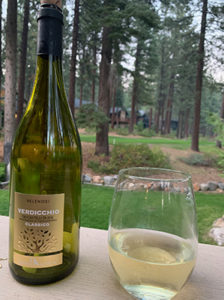
Angela and Ercole Velenosi started the company in 1984 with no capital, land, or knowledge of the wine industry. They applied for both bank credit and European funds that helped young entrepreneurs in the agricultural sector. The biggest assistance was given by the European Union, which financed and still finances many agricultural development projects, and a part of these funds are given as non-repayable. Thanks to this assistance they were able to buy the equipment and machinery needed to produce their first vintage.
Angela Velenosi was all of 20 years old at the time.
Introduction to Le Marche
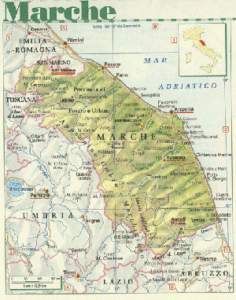
Le Marche is one of the twenty regions of Italy located in the central area of the country, bordered by Emilia-Romagna and the republic of San Arino to the north, Tuscany to the west, Umbria to the southwest, Abruzzo and Lazio to the south and the Adriatic Sea to the east. The land is fairly hilly, with a few river valleys and a flat coastal strip along the sea. Urbino, one of the major cities of the region, was the birthplace of Raphael, as well as a major center of Renaissance history.
Marche has long been considered one of Italy’s most popular tourist destinations. This area has numerous beautiful old towns, the hills and mountains of the Apennines and golden sand beaches along the Adriatic sea with crystal-clear water. However, it is still relatively undiscovered territory for wine lovers. So, it’s a great time to discover Le Marche vineyards stretching throughout the hills and surrounding medieval villages.
It is most readily associated with white wines from the Trebbiano and Verdicchio grape varieties. Another notable white wine from Marche is Bianchello del Metauro, made from Bianchello grapes grown around the Matauro river valley. Other widely planted white grape varieties include Pinot Bianco, Malvasia Toscana and Pecorino.
Among the red wines of Marche, the finest are generally made from the Montepulciano grape and/or Sangiovese. The two varietals dominate central Italian red and here make the intensely fragrant Rosso Conero Riserva. They are backed up by Ciliegiolo, Pinot Nero, Lacrima di Morro and notably Vernaccia Nera.
Velenosi Wines
Since 2000, Velenosi has consistently ranked within the top ten producers of the region. Headquarted in Ascoli Piceno, a town surrounded on three sides by mountains, with a population of roughly 52,000 and predating the founding of Rome, the company’s Velenosi Verdicchio Dei Castelli di Jesi is probably their most known wine.
I was lucky enough to taste four Velenosi wines during a special 2020 Wine Media Conference virtual tasting. While the wines were provided, opinions here are my own.
2019 Querciantica Verdicchio dei Castelli di Jesi DOC Classico
100% Verdicchio
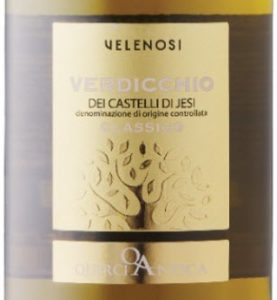
Jancis Robinson calls Verdicchio “the Chablis from Italy” because of its aging potential. Vineyards are located in the oldest areas of the Castelli di Jesi. Soil is medium-textured silt and clay, with a small percentage of sand. Slightly overripe, hand-picked grapes are fermented three to four months at a low temperature sur lies (over the spent yeast cells) in stainless steel tanks. Legend has it that when the troops of the king of the Visigoths, Alarich (370-410), marched on Rome, they drank barrels of Verdicchio to maintain their strength.
Tasting notes: Straw in color with a greenish hue (Verdicchio means “little green one”). Lemon, lime, melon, and a hint of fresh cut grass on the nose, followed by a bit of minerality with a creamy finish. Medium+ acidity. Medium+ finish. Alcohol: 13%. Wine.com price: $18.99
2018 Querciantica Lacrima di Morro D’Alba
100% Lacrima di Morro D’Alba
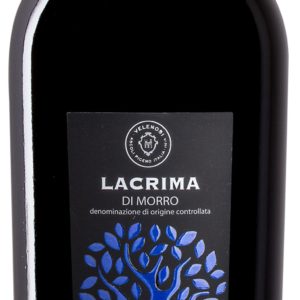
“Lacrima” in Italian means “teardrop” – the skin of the grape is so delicate that it pops when ripe and a drop of juice falls. Lacrima di Morro D’Alba is a distinctively scented red wine produced from the ancient Lacrima grape varietal native to Marche. Vineyards are located on mainly clay soil.
Lacrima di Morro d’Alba wines are also unusual in the way they are made. The governo Toscano (Tuscan method) is used, which brings the wine into a second fermentation via the addition of fresh, sugar-rich must pressed from partially dried grapes. Under DOC laws, this process must be carried out by December 31 in the year of harvest.
Tasting notes: Deep ruby red in color with a purplish rim. Intense flowery aromas (lavender, roses and violets) and ripe cherry or stewed strawberries predominate. The palate recalls vanilla blueberry cobbler with maybe a bit of cinnamon. Medium acidity. Medium+ finish. Soft tannins. Best to serve this wine chilled. Alcohol: 12.5%. Wine.com price: $18.99
2017 Brecciarolo Rosso Piceno DOC Superiore
70% Montepulciano, 30% Sangiovese
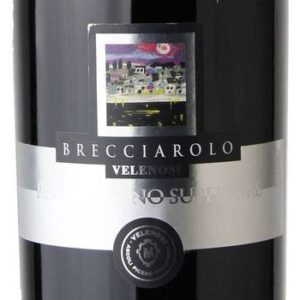
This wine is named after the hill where the first Veloni winery was built. Vineyards are located on clay and limestone soils located in the districts of Offida and Ascoli Piceno. The two varieties are fermented separately for about 20 days and aged in barriques used previously for Ludi and Roggio for 10 to 12 months.
Tasting notes: Deep ruby red in color. Raspberry and strawberry aromas with a hint of violet flowers and spices on the nose. On the palate, it is aromatic and full-bodied with a medium finish. Medium+ acidity. Drink this easy-going wine now. Alcohol: 13.5%. Wine.com price: $19.99
2015 Roggio Del Filare Rosso Piceno DOC Superiore
70% Montepulciano, 30% Sangiovese
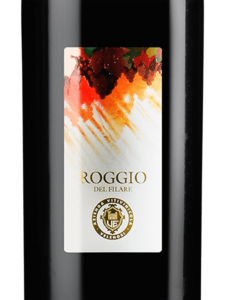
This “big brother” to Brecciarolo is Velenosi’s flagship, award-winning wine. While the varieties are the same as those used in Brecciarolo, the Roggio Del Filare grapes are from 50-year-old vines located in mostly sand at a higher elevation. Slightly overripe grapes spend a long time (28 days) macerating on their skins before aging in new French barriques for 18 months.
This is the third most highly rated Rosso Piceno wine (based on critic scores): the 2013 vintage was given a score of 90 by Wine Spectator.
Tasting notes: Intense ruby red in color. Red and black fruits to the nose full of dark cherry and blackberry, followed by black truffle notes. The palate is lush yet fresh and well-structured with lovely refined tannins and delicious fruit.Medium+ acidity. Medium+ finish. Should age nicely. Alcohol: 14.5%. Difficult to find.
Ercole and Angela Velenosi
“The wait for the magical moment when harvest can start, and then the slow birth and evolution of wine,” says Angela Velenosi, describes the annual pilgrimage from harvest to bottle. “If I could, I would do it again, and we might do it the same way!” Ercole and Angela Velenosi, with Paolo Garbini from 2005, have creatively re-interpreted the wine-making process and established a company which today spreads worldwide the scents and colours of the Piceno territory through its unique wines.
Conclusion
The Marche is a very appealing region for wine enthusiasts. For tourists, it is a large, but narrow wine region which runs parallel to the Adriatic. A triangle-shaped peninsula, it is unique for both its picturesque hillsides and its rustic charm. The wines of the Marche region in Italy have a different characteristic than the wines of most other Italian regions.

